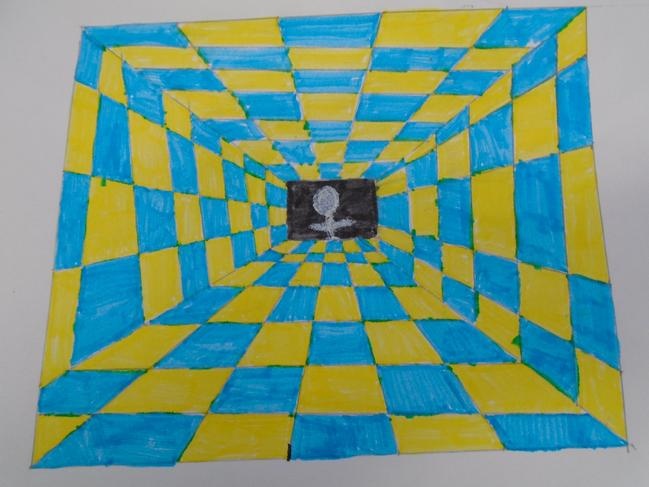Art
At Moorlands Primary School, we provide an Art and Design education which enables our pupils to develop an enthusiasm for Art and Design, whilst ensuring we fulfil the aims of the National Curriculum. This is achieved through using the Kapow Primary’s Art and Design scheme. This scheme is designed to give pupils every opportunity to develop their ability, nurture their talent and interests, express their ideas and thoughts about the world, as well as learning about art and artists across cultures and through history.
The Kapow Art scheme of work is designed with core aspects of learning that run throughout. The five core aspects of learning are:
- Generating ideas
- Makings skills, including formal elements (line, shape, tone, texture, pattern, colour)
- Knowledge of artists
- Evaluating and analysing
- Using sketchbooks
The first four aspects of learning align with aims of the National Curriculum for Art and Design, while the use of sketchbooks is widely seen as a vital artistic method for artists to explore and grow their ideas.
The units are designed to scaffold and support age-appropriate sequenced learning, allowing children to build their skills and knowledge, applying them to a range of outcomes. The formal elements, a key part of the National Curriculum, are also woven throughout units. Creativity and independent outcomes are robustly embedded into the units, supporting pupils in learning how to make their own creative choices and decisions, so that their art outcomes, whilst still being knowledge-rich, are unique to the pupils.
Key skills are revisited again and again with progression through increasing complexity, in a spiral curriculum model. This allows pupils to revise and build on their previous learning. Units are organised into four core areas:
- Drawing
- Painting and mixed-media
- Sculpture and 3D
- Craft and design
Our Curriculum Overview document shows which of our units are covered in each year group, the National curriculum attainment targets as well as each of the strands. We follow the condensed model with half-termly Art and Design units being taught – alternating with our Design and Technology curriculum units.
Our Progression of Skills document shows the skills that are taught within each year group and how these skills develop to ensure that attainment targets are securely met by the end of each key stage.
Lessons are always practical in nature and encourage experimental and exploratory learning with pupils from Year 1 to Year 6 using sketchbooks to develop and document their ideas. Differentiated guidance is available for every lesson to ensure that lessons can be accessed and enjoyed by all pupils and opportunities to stretch pupils’ learning are available when required.
Knowledge organisers for each unit support pupils by providing a highly visual record of the key knowledge and techniques learned, encouraging recall of skills processes, key facts and vocabulary.
The curriculum is designed in such a way that children are involved in the evaluation, dialogue and decision making about the quality of their outcomes and the improvements they need to make. By taking part in these discussions and decision-making processes as part of their lessons, they will be able to talk more confidently about their own learning journey, have opportunities to use key vocabulary, develop evaluation skills (appreciation of their own and others’ artwork) and have a growing understanding of how to improve.
The expected impact of following the Kapow Primary Art and Design scheme of work is that children will:
- Produce creative work, exploring and recording their ideas and experiences.
- Be proficient in drawing, painting, sculpture and other art, craft and design techniques.
- Evaluate and analyse creative works using subject-specific language.
- Know about great artists and the historical and cultural development of their art.
- Meet the end of key stage expectations outlined in the National Curriculum for Art and Design.
During lessons, questions are encouraged, misconceptions are discussed and addressed and skills and knowledge are talked about. Teachers use a range of evidence from lessons, including verbal and written evidence, observations of pupils while they work and artwork produced by pupils, to make judgements on whether the key objectives for each unit have been achieved. In addition, at the end of each unit, there is a summative assessment to see how well children have understood the key ideas from the unit taught.
Records are made of pupils meeting the expected knowledge and skill outcomes, as well as those working towards them or at greater depth, using the Moorlands Primary School subject assessment documents. These inform teacher judgements and evidence of progress for pupils’ annual reports, as well as providing evidence for the monitoring of standards and pupil progress in Art and Design by the subject leader.
Commonwealth Games Project
As part of Moorlands' work on the Commonwealth Games project, we will be producing artwork which will be displayed at Wednesbury Town Hall. The stimulus for the artwork is Life in Jamaica as the school has been partnered with a school from this country.
Years 3 and 4 worked with Darrell Wakelam on a sculpture that promoted diversity and the importance of being inclusive.

Moorlands Art Gallery
Climate Change Project
Year 4 and 5 worked on two pieces of art work with the theme of 'Climate Change', they chose to represent it by comparing the fires that have occurred in different forests across the world with the melting glaciers and ice caps.
KS2 Art Project
Pupils had the opportunity to work with an artist to produce a sculpture which portrayed the school's core values.
Moorlands Values Tree

Pupils in Year 4 are collaborating with Wodensborough Ormiston Academy Design Technology department to produce the school's core values using different mediums.














